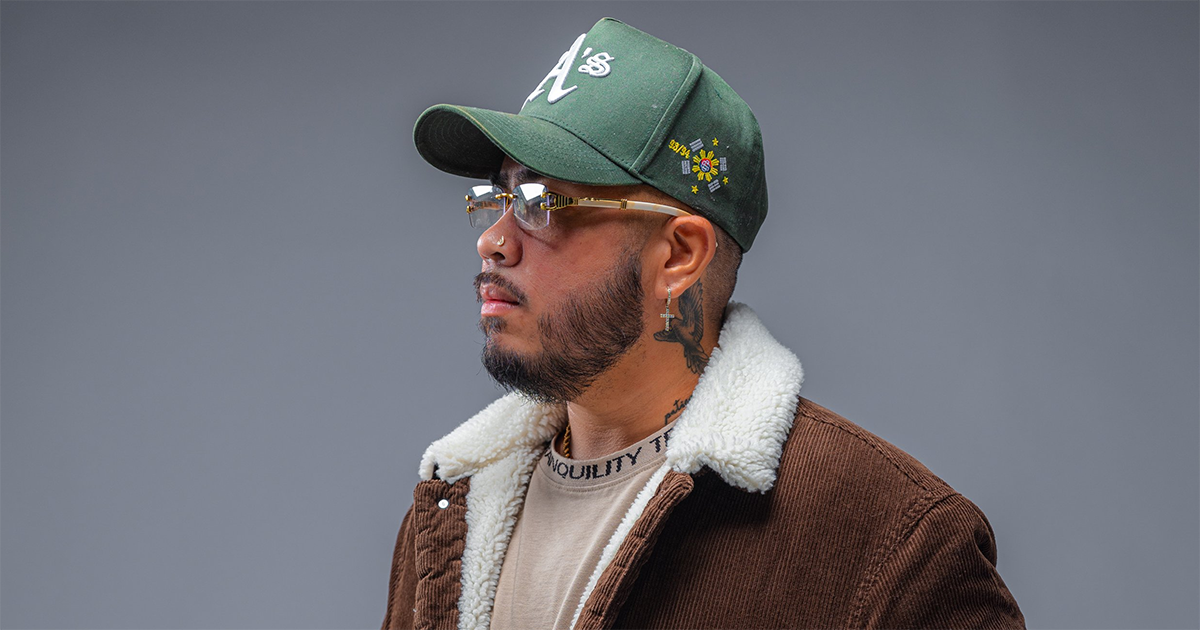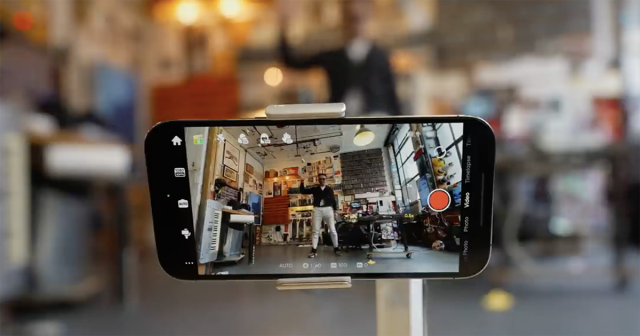
TL;DR
- Filmmaker and content creator Adrian Per shares his best practices for creating great short-form video content.
- Per advises that good principles for filmmaking, like pacing, the rule of thirds, and color psychology all still apply for TikTok videos.
- He also says that he loves gear, but it isn’t strictly necessary to make good content. The most important element is a good story. (The second most important element is being able to hear that story, so investing in a microphone is a good idea.)
“A lot of people waste time on their hooks. You have about 60 to 90 seconds, maybe two minutes, if you’re making a TikTok,” Adrian Per told the audience at B&H BILD Expo. (Watch his full talk, below.)
Specifically, he warns, “A lot of people waste time explaining who they are. Or if they’re selling a product. They’re telling you about the product immediately. … that’s not how you sell that. And that’s not how you sell yourself.”
Instead, “you want to get into the premise of your video immediately,” Per advises. For his format, that means telling the camera: “Today, we’re going to learn about sound design.” To save time but add detail, he will add a written description. For example, “This is how you do sound design for free. This is how you do sound design on a budget. This is how you do sound design for under $200.”
“Bam!” Per says. “If you’re interested, you’re gonna stay for a few more seconds.”
Regarding the “intro” and “follow and like” trends, Per says, “I promise you, nobody cares who you are at the beginning of the video. But maybe towards the end, they will.”
STRUCTURE AND PACING
Even in short-form video, “you still want to keep the basic principles of storytelling,” Per explains.
No matter your kind of content, Per says, “There are little tidbits and moments within your story or within your day that you can create tension. That’s what keeps us entertained. That’s what keeps us watching. We want to see you solve something.”
“It’s just really condensed,” Per says. “So it’s still a three-part story. It’s still a beginning, middle and end.”
“Don’t rush. You know, you still want to deliver a story,” he says. “You still want it to breathe.”
After all, “if people like your content, they’ll follow, and they’ll see more parts” if you run out of time to capture all your thoughts in one TikTok or Reel.
AUDIO AND MUSIC
Remember, Per says, “You’re delivering a story, so you want people to hear the story.”
“Audio is really important,” he says. “You can watch a shitty quality video with good audio, and you’ll be in tune. But you can’t watch an 8k or a 4k video with shitty audio, there’s wind blowing in the background, you’re not going to watch it. And that’s just a fact.”
But “As long as it’s clear, you can use anything. I personally use these wireless lav microphones,” Per says. He adds, “I use my phone as my recorder a lot.”
Also, Per says, “Picking out your music is really, really important. I pick out my music first. Like I’ll go through my songs on my Spotify playlist and say, ‘Alright, I’m going to do it to this pacing.’”
He suggests, “Fitting your dialogue or your voiceover, in the pockets, and within the tempo of your music is important.” He explains, “It’s like a psychological secret that you can use as a tool to get people more tuned into your content.”
Also, Per says, “I want to hear what’s going on. If you’re at the beach, and I don’t hear the waves it feels weird, right? If I’m at a park and I don’t hear birds, it feels empty. These are things that weren’t really noticed. But they’re felt.”
To achieve that, he says, “I meticulously go through all of my sound design. You know, I have a whole folder of things that I’ve recorded on my phone, whether it’s waves, whether it’s me driving in my car, the sound of me chopping vegetables, I throw it in there, and I match it with my footage. And that’s just the free way to do it. I know there’s like subscriptions out there for stock sounds but they’re really expensive. I’ve downloaded sounds from YouTube.”

SHOTS AND LENSES
“A lot of these things, they’re felt,” Per explains. “They’re not really noticed or seen. But when a story is done, right, you’ll notice them because it feels… different.”
When creating short-form content, Per says, “I still keep in mind the rule of thirds, I still keep in mind, like the science behind my lens choice.”
Understanding “lenses, focal length, that’ll help a lot. OK, if you can afford it, if you have the access to multiple focal lengths, they can help,” he says.
“When I’m trying to deliver something that’s personal, or deliver something that I want you to really pay attention to. I’ll use a 35 to 50 millimeter because it blurs out the background,” Per says.
Conversely, “with a wide lens, it distorts things. It’s anxiety inducing. It can feel scary,” he says.
Also, “a formula I like to keep in mind: I’ll go from wide, extreme close up to medium to extreme close up to close up too wide. I like to give it variation in that something that will help your story and will keep your audience attention retained,” Per shares. After all, “I don’t want it to feel boring, right?”
Nonetheless, Per says, “I film over 50% of my content on my iPhone. There’s a lot of pickup scenes in my videos that you would never know that I shot on an iPhone. I just put on the cinematic mode and plug it in there. I color graded to match my cinema camera. And nobody will ever know.”
After all, he says, today, “everybody has a good quality camera on them. Whether it’s an Android, green bubbles, or an iPhone. I’m just kidding, Android quality is actually it, their cameras are actually better. I just don’t want to inconvenience my friends in the group chats.”
Ultimately, “You don’t need flashy editing, no tricks. You don’t need to [have] After Effects. Stories are told with just regular cuts in movies. If you know how to do it, that’s great. That’s awesome if it serves your story, even better.”
COLOR GRADING
Color grading is another nice-to-have for creators, as far as Per is concerned.
“Depending on the emotion, I will color grade to help that story, but it’s also not necessary, if you don’t know how to color grade,” Per says.
“If you’re talking about something somber or sad, desaturating your color or making it cooler will help tell that story,” he explains. On the other hand, “If it’s a hot, bright summer day … or if you’re making something happy, exciting, maybe you want to add some more saturation, maybe you want it to pop.”
In total, “Color grading [takes] probably 30 to 45 minutes” for Per, who notes, “I’ve made my presets for that for myself already.”
THE WHOLE PROCESS
“On average, it’ll probably take six hours,” Per says, “for one piece of content, dammit. Sounds like a long time.”
“When it comes to my Sunday short films, it takes me about 15 to 30 minutes to write it. I don’t know. Yeah, I mean, it’s 90 seconds, right? So I try not to think too hard. And I’m confident in how I speak and how I deliver. So when it comes to writing, I kind of just talk things out with the music.
“And that takes about 15 to 30 or so, filming it. I take anywhere from 90 minutes to four hours, sometimes, filming a 90 second video, which sounds pretty insane. But I don’t go anywhere past four hours or so. I feel like that’s just overshooting and if I am taking over four hours just because I didn’t plan it as well as I should have. For the most part, it’s under two hours and with editing. It takes me about an hour, sometimes 30 to 45 Just because I look at my script.”
But Per says, “I try to deliver quality and value without sacrificing my day.”
Also, he advises, “the more times you do something over and over, the better you will get. So when you spend a bunch of time on one piece of content, and not put it out or try to perfect it I think, you know that time spent on perfecting that one thing by putting hours into it. I think it hurts you in the long run.”


